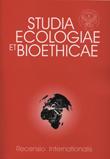
We kindly inform you that, as long as the subject affiliation of our 300.000+ articles is in progress, you might get unsufficient or no results on your third level or second level search. In this case, please broaden your search criteria.


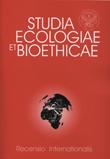

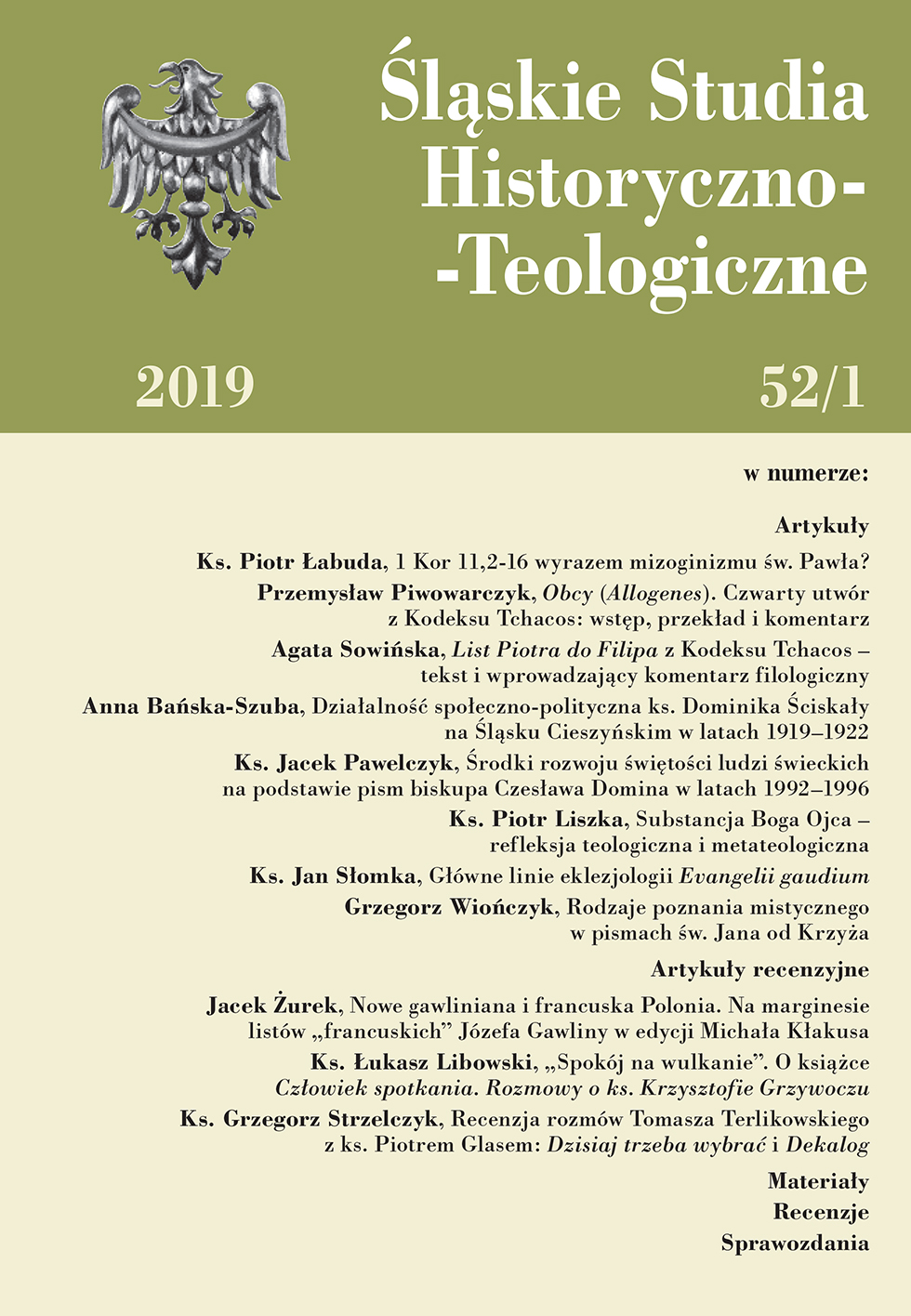
The substance of God is one and the only one, common to the three Persons. In other words, each of the Divine Persons has the same substance. Respectively to this, in one absolute substance, there are three personal characters, and each Person has the same substance, but in a personal aspect in a different way. This article draws attention to the first of the Divine Persons. The substance is one of the five requisite and sufficient elements to define a given being: substance, relation, interior, exterior and activity. The substance and the specific personal characteristic have been emphasized in the present reflection. The substance of God in its Fatherly character (fatherhood) is open to the characteristic of the remaining two Persons in such a way that it gives birth to the Son and the waft/breath of the Holy Spirit. Giving birth and breathing are connected with two different personal features, but they comprise the whole substance.
More...
Pope Francis builds his ecclesiology around thestatement that the Church is a community ofChrist’s disciples, sent to the world to announcethe Good News. This announcing should alwaysmaintain the dynamics of the kerygma. The community of disciples is a community of weak, sinfulpeople believing in Christ and seeking conversion.The conversion should result in the transformationof the Church structures. The world to which theChurch has been sent is loved by God, and in everyhuman being God’s grace is at work, even beforethey are reached by the Gospel. The Church, therefore, does not need to occupy a central position inorder to fulfill its mission. Such understanding ofthe community, its mission and the world is thestarting point for the interpretation of the wholerange of situations in which the Church lives today. Particularly striking are the reflections on thecity as a place of living and evangelisation, wherethe Church should concentrate significant efforts.
More...
Saint John distinguishes between two kinds of cognition: the natural one and the supernatural one. He divides the supernatural cognition into two more subdivisions: specific and extracted one and general and dark one, which is described as contemplation. The specific and extracted supernatu-ral cognition is divided into physical cognition and the spiritual one. The latter one, according to saint John of the cross, includes: revelations, words,spiritual feelings and visions. Based on testimonies of Saint John questioning the status of clear cognition (in raptum) seems justifiable.
More...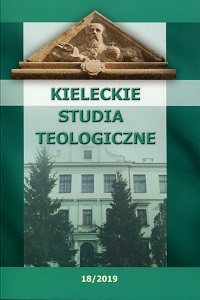
The article analyses the teaching of John Paul II regarding angels, which the pope delivered during wednesday catecheses in 1986. First, it presents the significance of the angel and archangel in the Old and New Testament texts. it is worth noting that John Paul II reminded us of the central place that Jesus Christ occupies among the pure spirits. his priority results from his “name”, as the scriptures indicate. in reference to the new testament, John Paul II points to numerous proofs of the angels’ presence in the life of Jesus and in the history of salvation. Being endowed with freedom, they were called to adore God and lead the man to salvation. the pope drew attention to the fact that in the eschatological scenario, during the last judgment, angels will be the executors of God’s verdicts.
More...
The problem of transhumanism allows us to ask the most important questions about man, his freedom and relationship with god anew. serious treatment of the achievements of science and technological possibilities of the modern world allows us to rediscover the experience of faith of the first Christians, who perceived the work of Christ on the cross and its communal presence in the mystery of resurrection as a victorious force enabling reconciliation of all eternal contradictions of the biological and, at the same time, the spiritual world. This faith in overcoming processes described in the article as “social algorithm” allows us to look to the future with hope of crossing subsequent biological and technological boundaries, while urging us to proclaim Christ’s victory on the cross even more strongly in the face of increasingly more forces being harnessed for the fulfilment of the lusts and desires being released.
More...
the biblically based practice of fasting has not yet found its rightful place in ecumenical documents. however, it is a means that could unite divided christians in their spiritual goods. Fasting is perfectly in line with “spiritual ecumenism” which implies an inner change and true mortification along with prayer. while christians cannot fully participate together in the eucharistic Feast yet, they can unite in a common fast which, could thus reach the dimension of a truly “eucharistic” fast. Fasting can be an expression of hunger and longing for unity, which will come true when the lord returns. the article presents fasting from the roman catholic, orthodox, and evangelical perspectives as well as from the point of view of new currents of christian life, which may help find the right expression for its ecumenical practice.
More...
The article presents an analysis of the phenomena of sleeping and dreaming, from the theological, biblical and historical perspectives, as well as in the light of the latest scientific research. The description of the complex processes occurring during sleep and the not yet fully scientifically explained meaning of dreams is a background to reflect on the contemporary interest in dreams and their interpretation. dreams have always fascinated mankind. we find this topic in ancient literature, in the Bible, while science nowadays gives dreams new meanings and points to new ways of understanding them. in the contemporary, both Catholic and protestant, charismatic trend one can observe a renewed interest in dreams and their spiritual significance. There are more and more publications about dreams, their understanding and interpretation. Ultimately, the article aims to show how, from a theological point of view, dreams can be a space for encounter with god and space for His prophetic manifestation to people.
More...
the article deals with the problem of the definition of religion between theology and religious studies. in the twentieth century, theological reflection on religion has gained increasing attention and, in this context, theologians frequently employed ideas drawn from religious studies. however, their field of interest tended to be restricted to certain selected approaches, while other subdisciplines, such as anthropology of religion, often remained unnoticed. hence, the focus of this article is on the issue of the anthropological definition of religion and its implications for theology. the goals of this essay are: to present the conditions under which attitudes to “religion” drawn from anthropology of religion may be acceptable in theological reflection and to present the polythetic attitude as a possible solution to the issue. the main body of the article is based on terms and theories drawn from religious studies, whereas the overall argument is grounded in a theological perspective.
More...
the author undertakes the topic of catholic schools’ activity in postmodern society. the major purpose of the article is to present the main challenges set by postmodernism to catholic education. these challenges are described in the first part of the article. another aspect is an outline of the history of catholic education in poland. it leads to the conclusion that the effort the catholic church puts into education has developed over the years and that it should also address the context of postmodernism. the last section points out to the elements of the catholic school identity as a response to the current social-philosophical context.
More...
one of the church’s tasks is to guard the revealed truth and communicate it in a way that is adapted and understandable to the contemporary man but with perfect fidelity to the deposit of the faith. This task implies a continuous reform and adaptation which shall nevertheless not compromise the deposit itself. Thus, the reform should take into account two factors: fidelity to the tradition and regard for the modern sensitivity or, in other words, fidelity to the theological premises and awareness of the temporal world (pragmatism and utility). rapid social and worldview changes may create a pressure to keep up with them, leading to an excessive emphasis on the second factor which, in turn, can lead to an unwittingly neglecting the theological content of the transmitted truths and practices of the church. The present article is an analysis of both the utilitarian and theological-spiritual premises related to the financing of the church. its goal is to demonstrate the interdependence and interconnectedness of today’s forms of care for the temporal goods of the church.
More...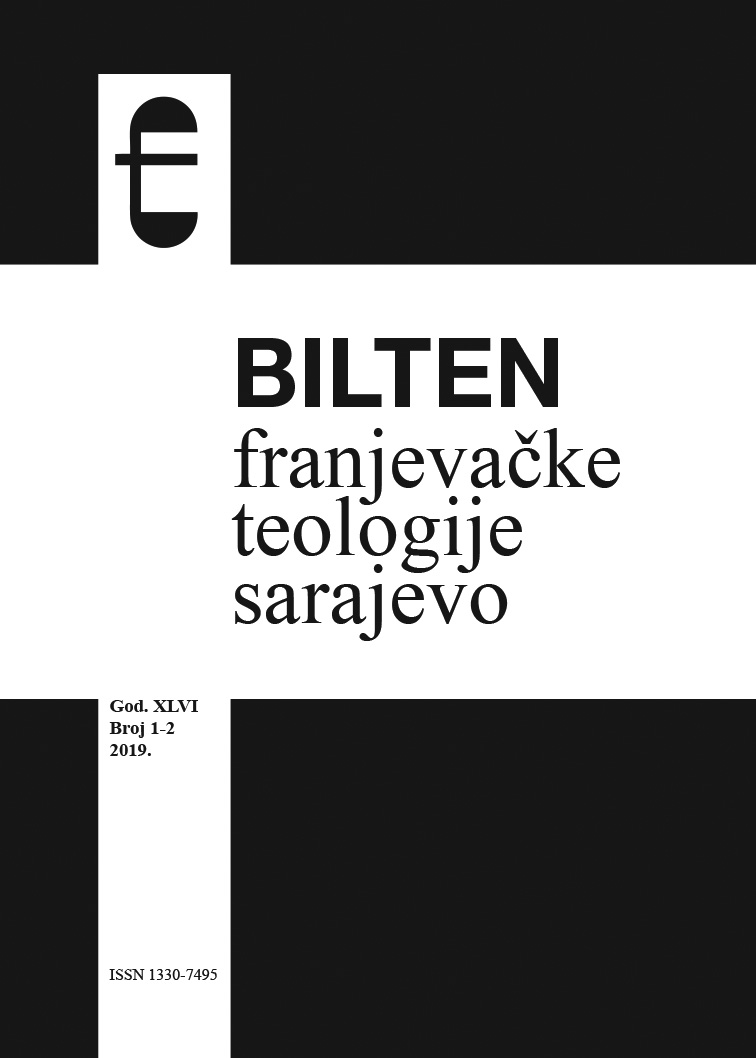
Pred kakvim izazovima stoje danas kršćani u Srednjoj Europi? Imaju li krš ćanske crkve dovoljno vitalnosti, uvjerljivosti i lijeka, kako bi pomogle, da se Europa održi pred onim pred čim je ugrožena, osobito pred opasnim valom populizma? Zar neće ponajprije za Crkve vrijediti ona izreka: Medice, cura teipsum – Liječniče, izliječi sam sebe? Kakvo je stanje krš ćanstva u današnjoj Europi? Tko god pokušava dati odgovor na ovo pitanje, mora biti svjestan da gleda iz određene perspektive i da mu je njegova perspektiva nužno ograničena. Živimo u vremenu radikalne pluralnosti, a ako hoćemo da naši iskazi imaju neku vrijednost, onda ih moramo stalno korigirati i obogaćivati kroz dijalog, koji će nam u određenoj mjeri omogućiti da sudjelujemo u iskustvu drugih ljudi.
More...
Za vrijeme boravka u zatvoru godine 1923. Mohandas Karamchand Gandhi piše: „U mojim je očima Isus jedan od najvećih proroka i učitelja koji su došli na svijet. Moja naklonost prema Isusu uistinu je velika. Njegovo učenje, obzirnost i smrt nukaju me da ga poštujem. Gandhi je bio preduboko ukorijenjen u misaoni svijet i religiju svoje domovine Indije. Iz hinduističke tradicije preuzeo je vjeru u ahimsu, bezuvjetno nenasilje koje je postalo vodiljom njegova djelovanja.
More...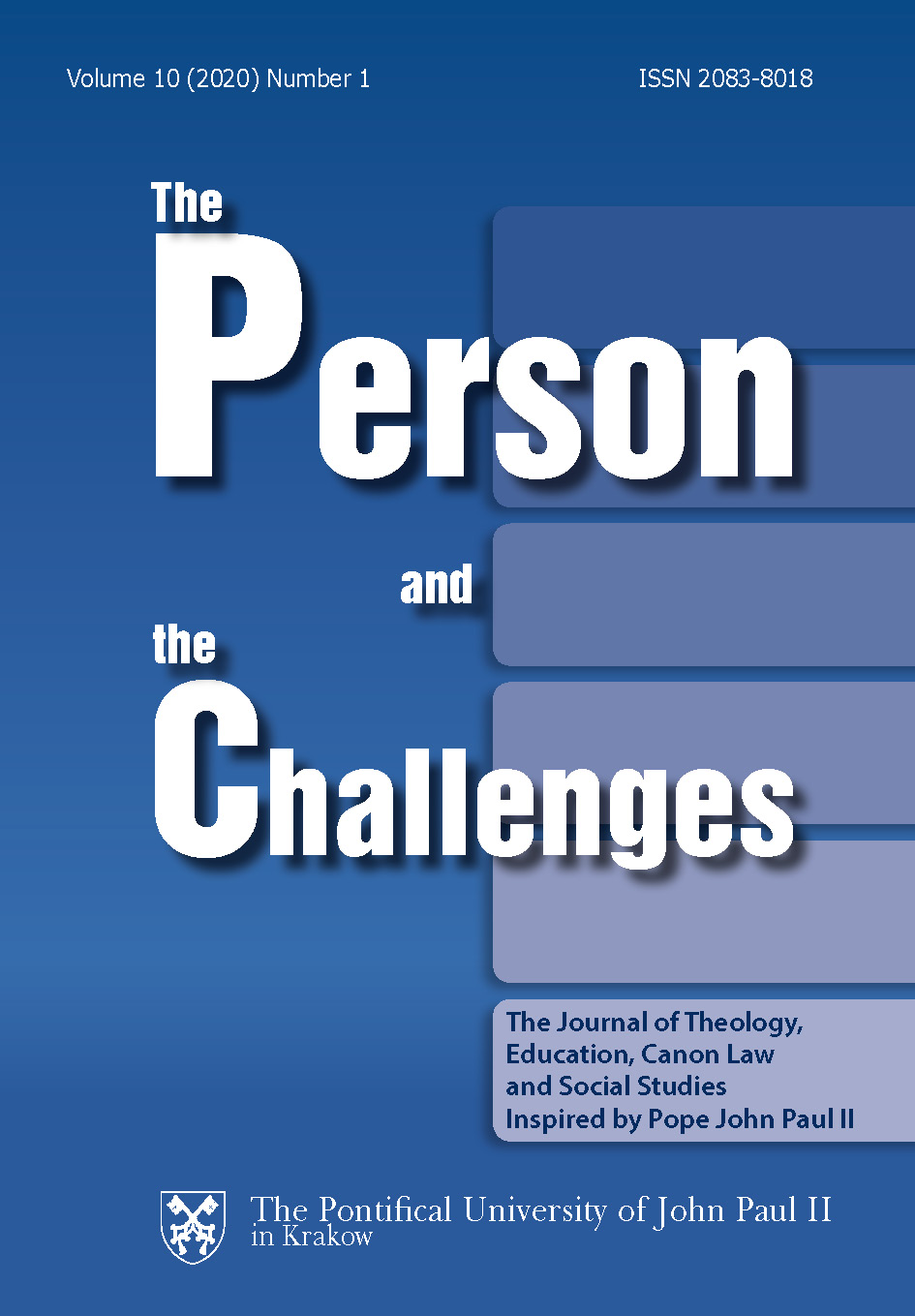
Philip Phenix’s (1964) book Realms of meaning: A philosophy of the curriculum for general education started the ever growing movement concerned with how school education might help young people in their search for meaning, purpose and values in times of rapid cultural change. Today, in globalised, digital, secularised culture, the importance and urgency of this role have never been greater. Religious Education, with core curriculum status in Catholic schools, has both credentials and precedents for studying directly the contemporary human quest for meaning to help resource the spirituality of young people, no matter what their religious disposition. But a ‘course correction’ is needed for the discourse of Catholic Religious Education which has ‘drifted’ almost so exclusively into ecclesiastical terminology that its educational credibility as a valuable spiritual/moral school subject has been eroded, creating an ever widening discontinuity with the realities of the classroom and young people’s spirituality. A more outward-looking and less Catholic-centric emphasis would help, without neglecting commitment to the faith tradition. While concerned with the Australian Catholic sector, the article may well have relevance to other countries and contexts.
More...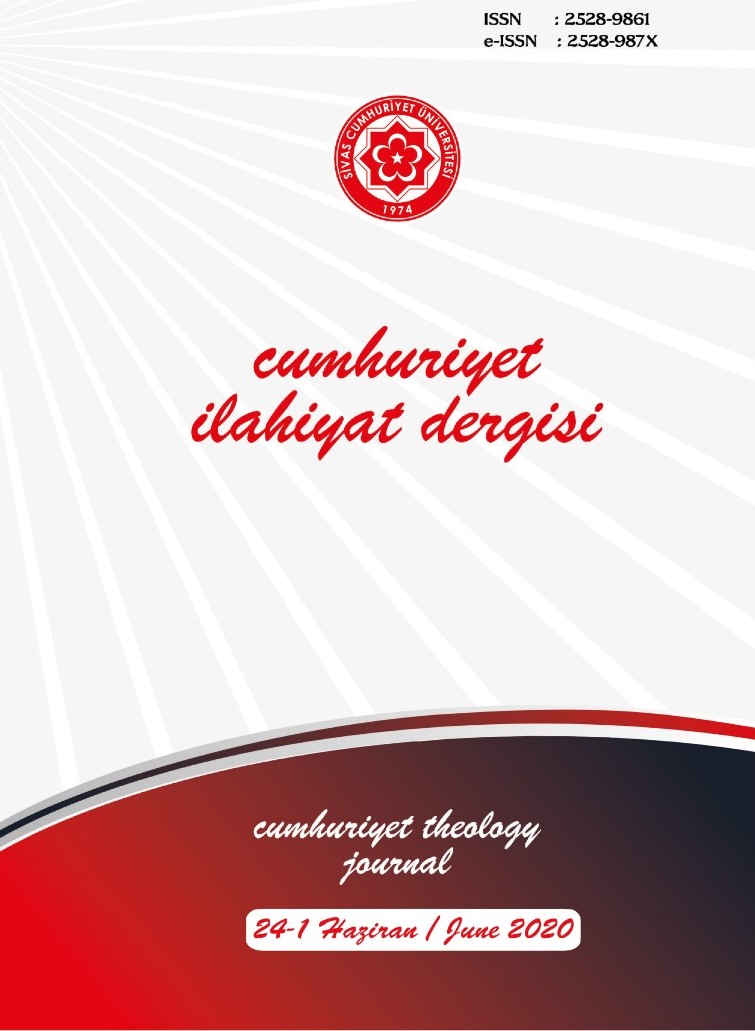
One of the theological disagreements in Christianity is the legitimacy of infant bap-tism. It was not discussed in the early period of Christianity. Nevertheless, it is one of the problems that have been debated especially since the post-reform period. Debates about in-fant baptism create differences in Christianity. Churches accepting infant baptism, especially the Catholic Church, acknowledge it as a tradition that has been practiced for thousands of years. According to them, children were baptized by Jesus and the Church Fathers kept doing this ritual. However, most of the Protestant Churches, like Anabaptists, criticize infant bap-tism as it does not happen based on free will. They claim that such people should get baptized again. According to them, Jesus did not baptize infants and the biblical texts, which are shown as a source of infant baptism, indicate that either Jesus blessed babies or baptized adults. Therefore, theological debates about infant baptism have continued in Christianity. The arti-cle discusses the historical process of infant baptism and the arguments presented by differ-ent groups about this discussion. The main framework of the article is the discussions be-tween groups about biblical texts and religious identification, especially the post-reform pe-riod. Infant baptism is an important issue because it includes modern discussions about dif-ferences among churches, Bible interpretation, will, and mind. Since there is no specific study on infant baptism in our country, we can say that the article will contribute to the studies of the history of religions.
More...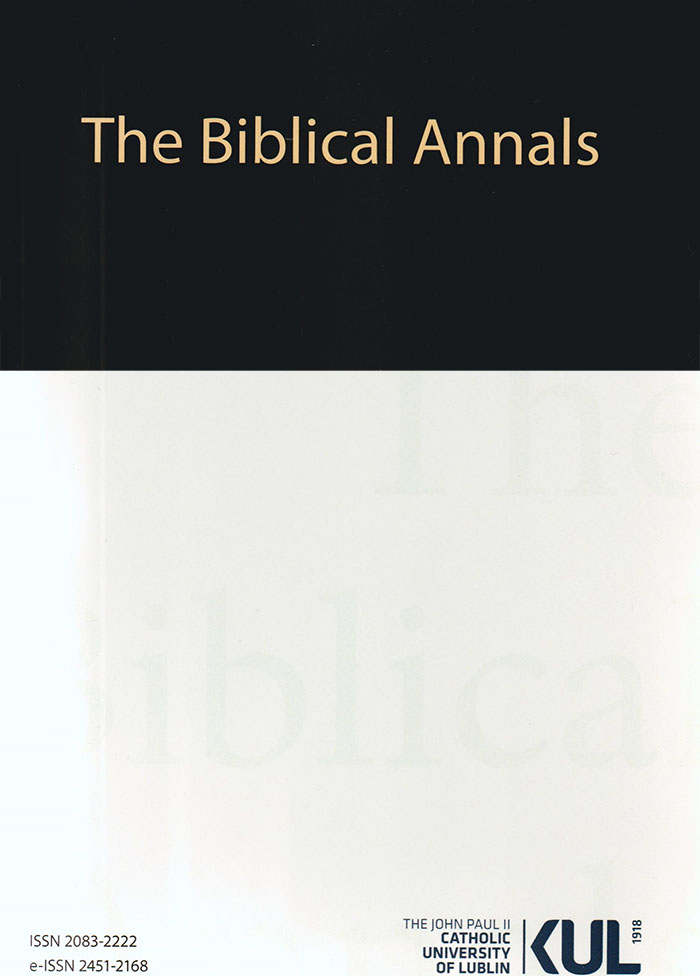
In recent years, some scholars have claimed that God’s creation of humani-ty in the divine image (Gen 1:26-28) presents both a royal-functional reading and also the model of nonviolence that counters recurrent violence throughout the Hebrew Bible. This nonviolent reading of humanity created in God’s image disregards the mention of this concept at the end of the Flood Narrative in Gen 9:6. This article firstly takes into consid-eration the proximate context and semantics of Gen 9:6 expressed through its structural, linguistic and syntactic aspects. Moreover, the pragmatics of this saying will be analyzed through the investigative criteria of discursive analysis to better identify how semantic meaning and other contextual features underpin what is communicated by this challenging utterance.
More...
This article deals with the putative event that gave rise to Psalm 116. The au-thor proposes a serious illness of the devotee as its interpretative matrix. This assumption is developed in three stages. First, the problematic verse 3 is examined along with other expressions. This analysis leads to the conclusion that there are no decisive obstacles to the aforementioned hypothesis. Second, the whole of Psalm 116 is taken into account in order to place the problematic elements within the Psalm into a broader context; and so as to highlight previously overlooked details in favor of the illness interpretation. Third, the vocabulary and the literary motifs of the Psalm are compared and contrasted with other OT texts dealing with illness, to justify the validity of the proposals.
More...